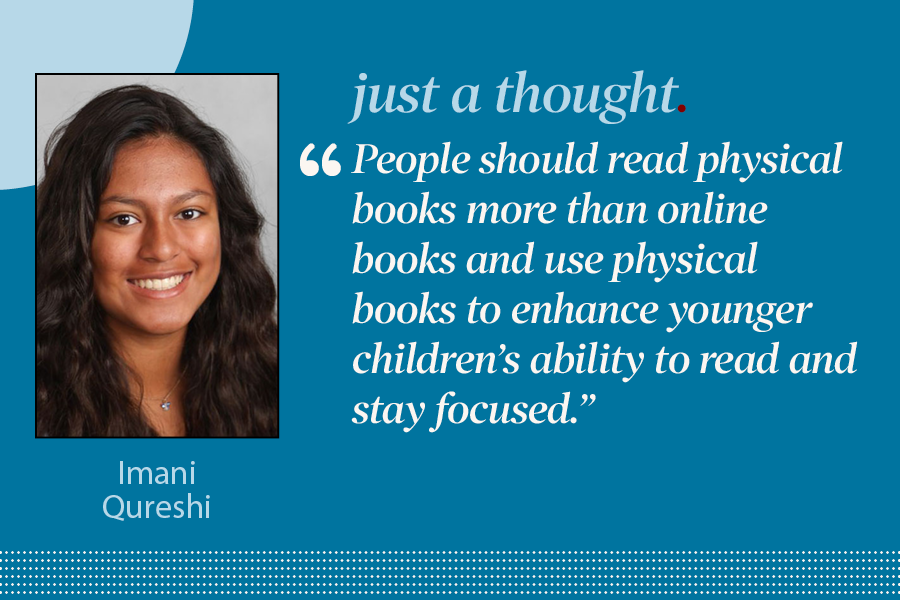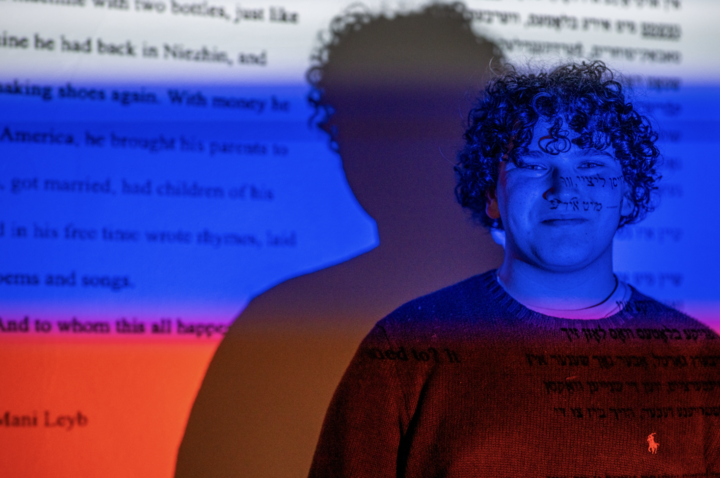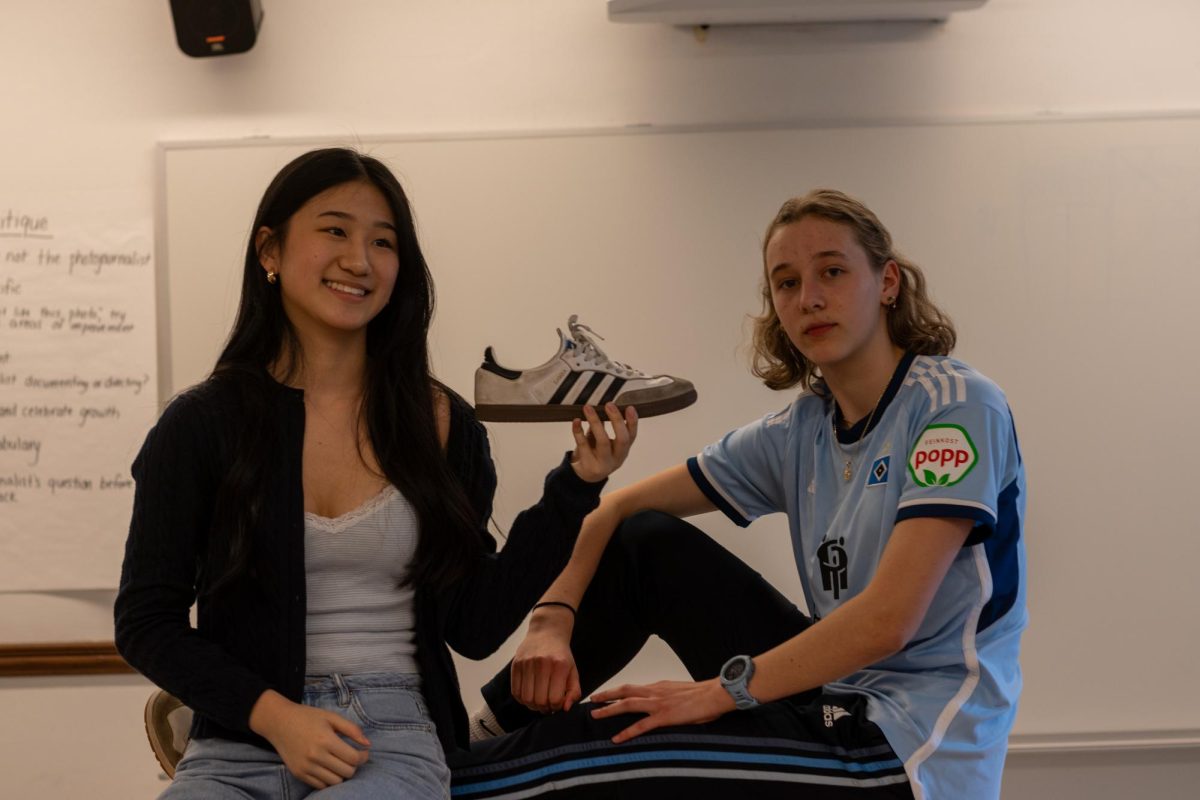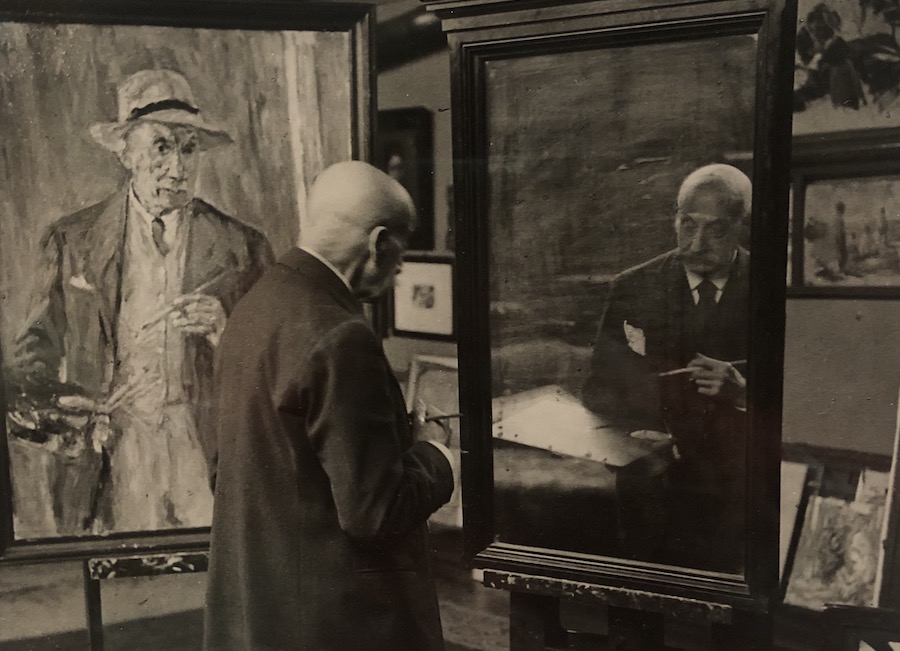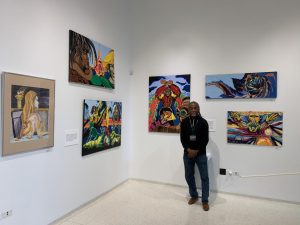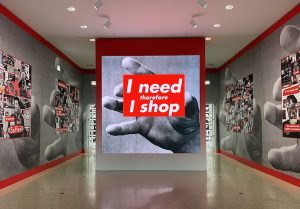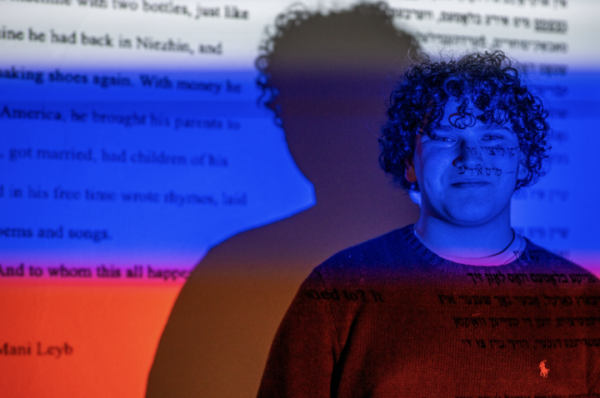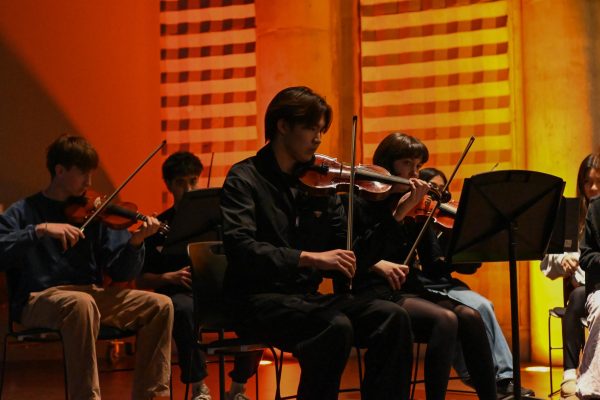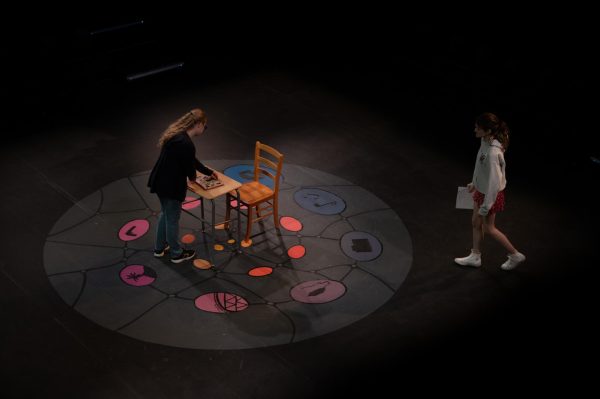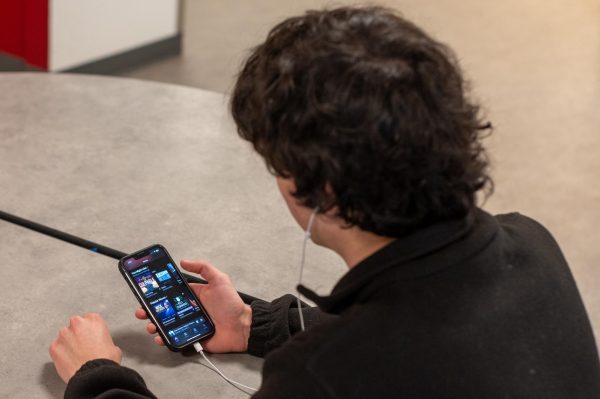Smart Museum exhibit challenges viewer’s perspective on art
Photogravure “Self-Portrait with Brush and Palette” by Edward Steichen as well as other intriguing art pieces can be viewed in “Smart to the Core: Medium/Image, 2021.”
A man bends over a mirror, his face slackened with lethargy — or perhaps it’s merely a fatigued state of concentration. Intertwined between his fingers is a small paintbrush, and to his left, an eerily similar man is painted on a canvas, the same size as his mirrored counterpart. The man drawn assumes the same position as the human figure and watches as he paints his own self-portrait.
This picture can be found at the University of Chicago’s Smart Museum, in “Smart to the Core: Medium / Image, 2021,” showing through Dec. 12. To the untrained eye, the photograph is rather confusing, but it really encompasses the exhibit’s purpose: to challenge the observer’s perspective on pictures. It particularly focuses on who the image depicts, what it conveys about humans and society and how sensation, perception and art are intertwined.
The museum itself is small, but the “Smart to the Core” exhibition makes up a sizable portion — a single, wide room with dark gray walls and tiled floors. The exhibit boasts a healthy mix of photographs, painted artwork and even interactive experiences. Many of the photographs are in black and white, and highlight extreme body features. One image is of a woman spread across a bed, but taking the place of her head is a box TV broadcasting her magnified eyes and nose. This was one of a gallery of mixed media pieces that commented on the exploitation of women’s bodies as art mediums.
Interactive features really make the exhibit stand out. At the front, a TV stands and records observers entering, distorting their bodies until they are no more than blobs of color. Called the “Selfish Gene Mirror,” this software reflects claims of Darwinian evolution, in that genes are what drives natural selection. Another interactive display, “Pulse Index,” encourages viewers to place their finger over a camera and watch as their fingerprints are reflected across a screen, each beating like a heart in different colors and dimensions. Interactive showcases like these help widen observers’ perspectives on what art and sensation really are, as well as force the viewer to consider the subject of an image and contemplate the connotations from it.
While the accompanying explanations could be a bit complicated (many lacked concise language that succinctly summarized the artist’s intent), the art pieces spoke for themselves, and really opened the conversation about art as a whole.
Next time you’re enjoying an art piece, consider who the subject is, who the artist is, and why the medium is framed in such a way. Think about the societal implications and privilege that come from painting or taking a picture, as well as about the exploitation of certain subjects.
Overall, “Smart to the Core” expands people’s thinking in its small art collection and is worth a visit. Located just a few blocks from U-High, the Smart Museum is free and open Tuesday to Sunday 10 a.m. to 5 p.m. (8 p.m. Thursdays).
















